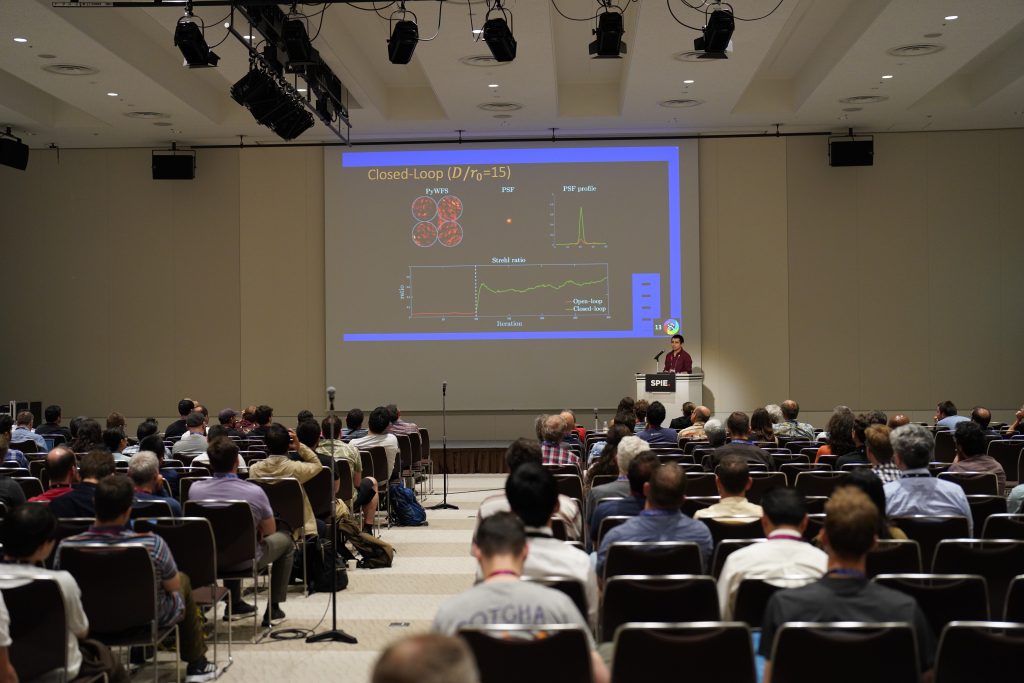This publication involves the use of neural networks to enhance the adaptive optics system in giant telescopes. The proposed idea will be tested on a telescope in France.

The publication discusses the use of neural networks to improve adaptive optics in giant telescopes, such as those being constructed in northern Chile. The proposed idea will be tested at the Haute-Provence Observatory (OHP) in France.
Camilo Weinberger, a member of the first generation of the Ph.D. program in Electrical Engineering and a member of our Optoelectronics Laboratory, led this research, stating, “It is the backbone of my doctoral work. With this article, I am closer to earning my Ph.D.”
The paper, titled Transformer Neural Networks for Closed-Loop Adaptive Optics Using Non-Modulated Pyramid Wavefront Sensors, was developed in collaboration with Optolab postdoctoral researcher Jorge Tapia, Dr. Benoît Neichel from the Laboratory of Astrophysics of Marseille (LAM), and Dr. Esteban Vera, PUCV professor and Optolab director. It was published in the Astronomy & Astrophysics journal.
At Optolab, Camilo mainly focuses on adaptive optics, which aims to correct aberrations caused by the atmosphere when capturing images or performing astronomical observations.
In this context, PUCV’s Ph.D. candidate, completed a research internship at LAM in 2023. During his four months there, he developed this paper, which improves the performance of a pyramid wavefront sensor through the use of neural networks.
In other words, it optimizes the functionality of a key component for research in adaptive optics through artificial intelligence and deep learning.

“The pyramid wavefront sensor, as its name suggests, is a crystal pyramid where a beam is directed to create pupils, or images, that represent deformations in the lens of a telescope. These aberrations are then corrected so that the star we are observing is also corrected,” says Weinberger.
The significant impact of this paper lies in the method used to reduce the limitations of the sensor and correct the atmospheric irregularities. The proposed method involves training the neural network to estimate the aberration as accurately as possible, then applying a closed-loop algorithm to quickly eliminate these deformations and maintain system stability. It is innovative as it integrates a previously used method in this field but improves upon it.
Additionally, as indicated by the paper’s title, it is a “non-modulated” application in the pyramid, which helps reduce unwanted aberrations and system noise. This modification yields better results compared to the modulated method.
The published article and the collaboration with LAM are the first steps toward testing the proposed system on a telescope located southeast of France, OHP, which is used for research testing. “It will be one of the first sensors of its kind to be tested directly on a telescope and not just in a laboratory”, says Weinberger.
Camilo presented this research at the SPIE Astronomical Telescopes + Instrumentation conference, receiving many positive comments. At Optolab, a team has been formed to work on optimizing the system, increasing its speed, and testing it on the French telescope.

If the test is successful, the system could even be applied and integrated into the complex adaptive optics systems of the Extremely Large Telescopes, which will be installed in northern Chile.
We will keep you updated on the progress of this exciting development, which highlights the significant advances we are making in astronomical instrumentation at our laboratory.
